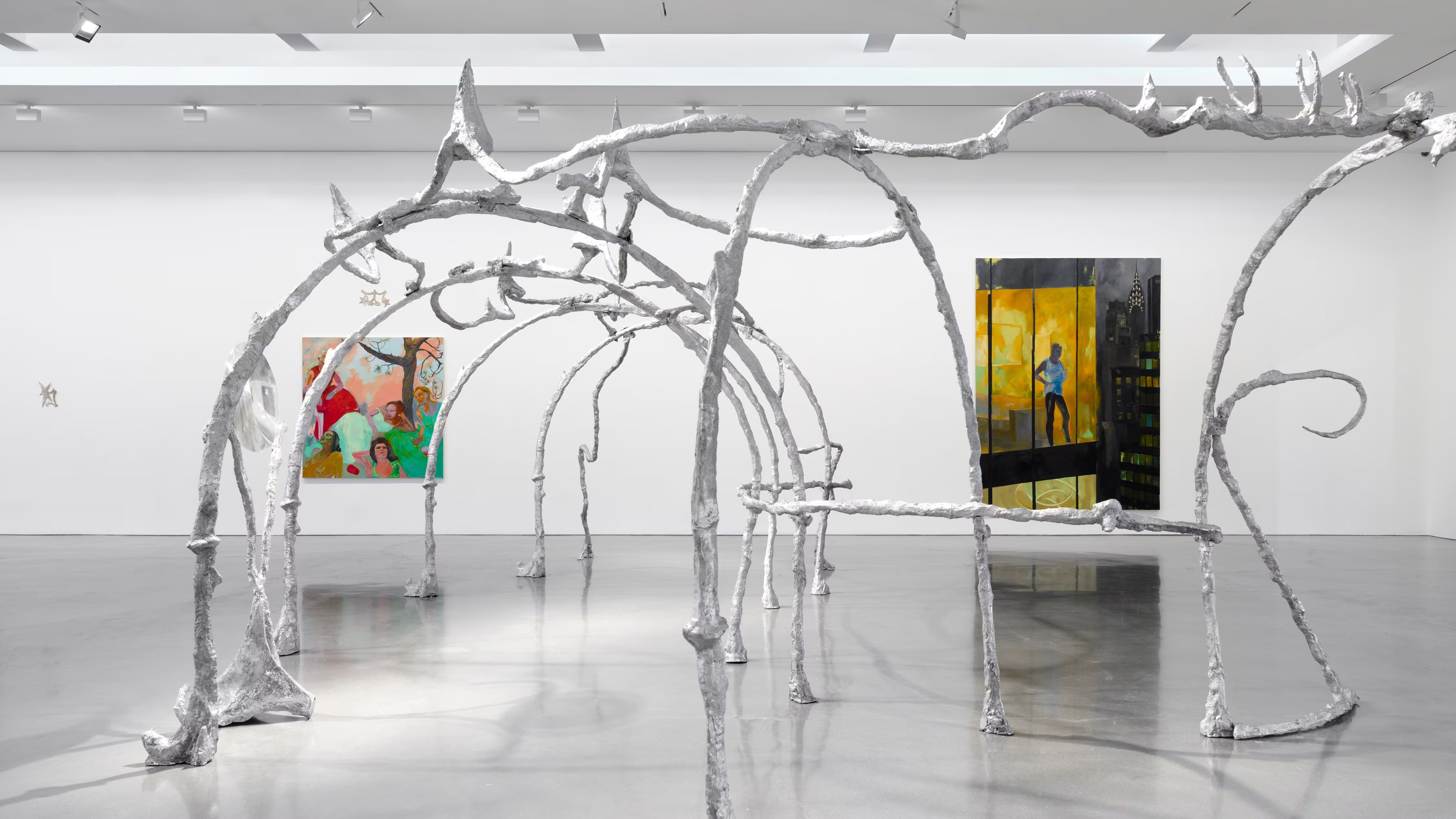
At the entrance of the Art Institute of Chicago, a 1st-century sculpture of Augustus welcomes viewers. The first emperor of Rome poses with a fisted, left arm raised and right arm outstretched, reminiscent of a statue of Zeus at the sanctuary of Olympia in Greece. Dozens more ancient Roman sculptures are exhibited for the first time in North America in “Myth and Marble: Ancient Roman Sculpture from the Torlonia Collection.”
Originating from the 5th century BCE through the early 4th century CE, the sculptures on view have lived several lives in the centuries since: Paint has faded, pieces have broken off, and surfaces scratched. Now, the works are entering a new chapter in Chicago.

At a black-tie opening and dinner the night before, harpist LeAnne Bennion greets guests before they are treated to exhibition tours led by curators Lisa Ayla Çakmak and Katharine A. Raff. Two long candle-lit, floral-adorned tables fill Griffin Court, where the Chicago native and Michelin-starred chef Joe Flamm of Rose Mary serves a meal of gnocchetti alla vaccinara, bistecca, roasted halibut, and tiramisu exclusively created for the occasion. The evening comes to a close with Joshua Brown and his 18th-century violin.
Presented by Fondazione Bvlgari and the Torlonia Foundation, the exhibition features 58 Ancient Roman highlights—on view through June 29, 2025, before heading to the Kimbell Art Museum in Houston followed by the Montreal Museum of Fine Arts. Twenty-four of the newly restored works have not been on public view in almost a century. “No one has seen these pieces since before the Second World War, not even in Italy,” notes Alessandro Poma Murialdo, president of the Torlonia Foundation.

The partnership between the storied Roman fine-jewelry house and the Torlonia foundation started with a meeting in 2017. “Their idea was that the brand should support art and, in particular, the traditions of antiquity, ideas that are also reflected in the heritage of Bvlgari,” says Pomo Murialdo of the fine jewelry house that was founded in 1884 Rome by Greek silversmith Sotirio Bulgari.
“From the very beginning, Bvlgari and Torlonia both represented the vision of one individual aiming to create something meaningful that could be passed down to the next generation,” says Carlotta Loverini Botta, president of the Torlonia Foundation. “In each instance, there is an idea being transmitted…the idea of patronage, of a family preserving its heritage for future generations.”

A museum established by Prince Alessandro Torlonia housed and exhibited the collection until it closed during World War II. The sculptures remained unseen by the public until the Torlonia Foundation’s first exhibition in 2020 at the Musei Capitolini. Each sculpture comes with an accompanying text and a diagram detailing the sculptures’ restoration. “They're covered in dust but a century of grime makes it difficult for the curator to evaluate underneath, if the sculpture is an ancient piece or a very good restoration—either from the 19th century, made for the Torlonia Museum, or a 16th-century Justinian, made by Bernini.”
Divided into six sections, the exhibition starts with Icons of the Torlonia Collection, imperial portraits, excavations, restorations, gods and goddesses, and finally funeral sculpture. Don’t be deceived by the perfectly chiseled bodies; much like Photoshopped and filtered faces of today, sculptures once served as ageless, idealized versions of the original subject, a foreshadowing of how we present ourselves online.

The excess, the hubris, and the clout chasing of today is very similar to ancient Rome. Much in the way that we communicate with images through social media, the Roman Republic did the same with marble and bronze figures, scattered throughout both public and private spaces to convey status, power, and authority. Today, Ancient Roman sculptures reveal the throughlines between the past and present, and encourage us to consider what has changed and what has stayed the same. “As we encounter uncertainty and crises around the world, classical art can serve as a beacon of light for people to examine their past and therefore recognize themselves better,” says Loverini Botta. “We think it's a very important opportunity for reflection.”
“Myth and Marble: Ancient Roman Sculpture from the Torlonia Collection" is on view through June 29, 2025 at Art Institute of Chicago at 111 S Michigan Ave, Chicago, IL 60603.









.avif)








.avif)


_result_result.avif)



.avif)

_result_result.avif)

_result_result.avif)
.avif)

_result_result.avif)


_result_result.avif)


.avif)




.webp)

.avif)















%20(1).avif)
.avif)




.avif)












.avif)


.avif)





















.jpeg)

.avif)

_11%20x%2014%20inches%20(2).jpg)







.avif)

.jpg)

%20(1).jpg)
.avif)
.jpg)

.jpg)
.webp)


.webp)



.webp)


.webp)


.avif)












.avif)
.avif)


.avif)











.avif)



.avif)




















-min_result.avif)









.avif)







3_result.avif)
_result.avif)






_result.avif)




.avif)




.avif)













_result.avif)




%2520(1)_result.avif)
_result.avif)


_result.avif)

_result.avif)
.avif)

.avif)







.avif)

.avif)










.avif)



.avif)


_result_result.avif)
















-min_result.avif)






.avif)
.jpg)
















_result.avif)

.avif)


.avif)







.avif)





.avif)

_result.avif)



.avif)







.avif)









.avif)


.avif)














.avif)




.avif)








.avif)

.avif)

.avif)



.avif)


.avif)




.avif)

.avif)

.avif)
.avif)
%20(1).avif)
.jpg)

%20(1).avif)








.avif)
.avif)

.avif)






.avif)


.avif)
.avif)



.avif)
.avif)


















.avif)
.avif)
